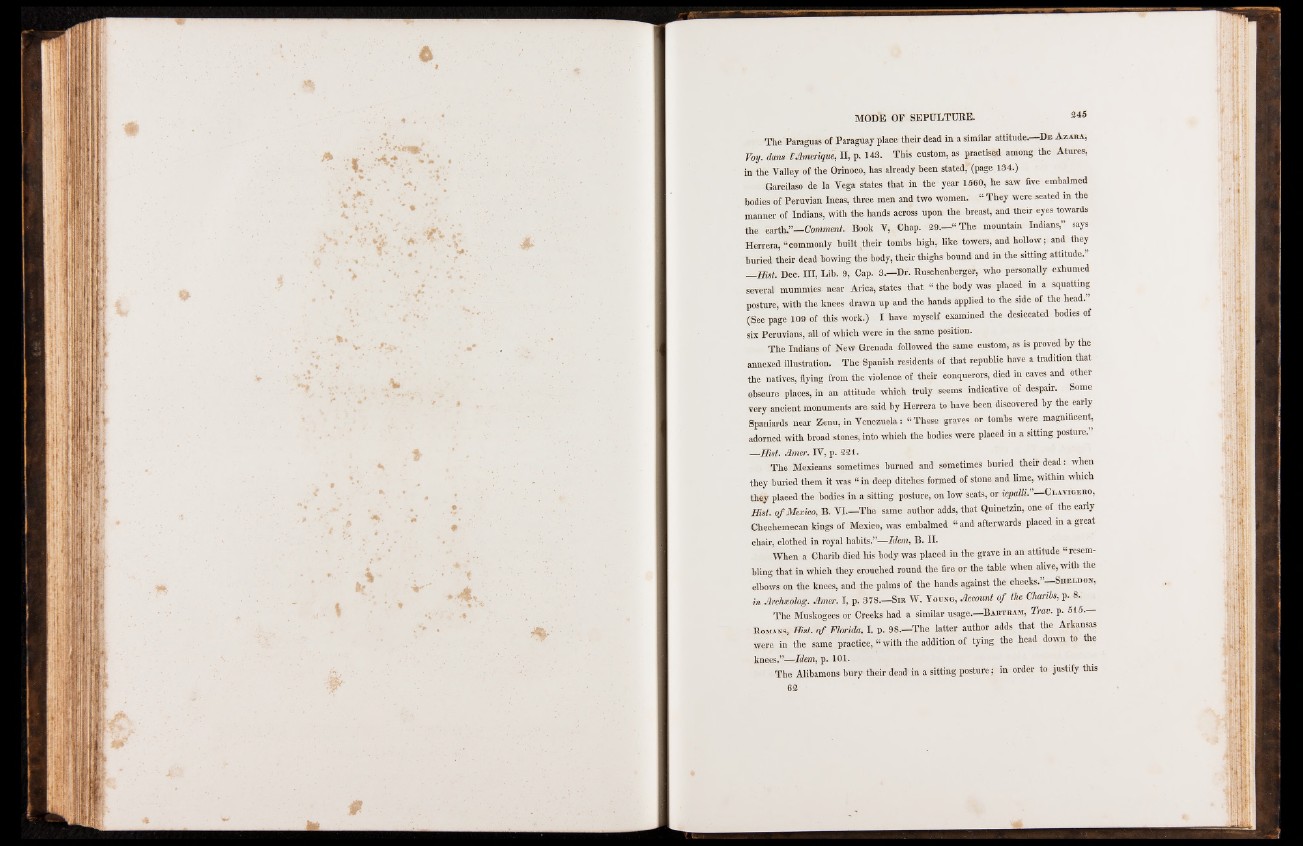
MODE OF SEPULTURE.
The Paraguas of Paraguay place their dead in a similar attitude.—De A zara,
Voy. dam TJlmerique, II, p. 143. This custom, as practised among the Atures,
in the Valley of the Orinoco, has already been stated,“(page 134.)
Garcilaso de la Vega states that in the year 1560, he saw fire embalmed
bodies of Peruvian Incas, three men and two women. “ They were seated in the
manner of Indians, with the hands across upon the breast, and their eyes towards
the earth.”—Comment. Book V, Chap. 29.—“ The mountain Indians,” says
Herrera, “commonly built their tombs high, like towers, and hollow; and they
buried their dead bowing the body, their thighs bound and in the sitting attitude.”
__Hist. Dec. Ill, Lib. 9, Cap. 3.—Dr. Ruschenberger, who personally exhumed
several mummies near Arica, states that “ the body was placed in a squatting
posture, with the knees drawn up and the hands applied to the side of the head.”
(See page 109 of this work.) I have myself examined the desiccated bodies of
six Peruvians, all of which were in the same position.
The Indians of New Grenada followed the same custom, as is proved by the
annexed illustration. The Spanish residents of that republic have a tradition that
the natives, flying from the violence of their conquerors, died in caves and other
obscure places, in an attitude which truly seems indicative of despair. Some
very ancient monuments are said by Herrera to have been discovered by the early
Spaniards near Zenu, in Venezuela: “ These graves or tombs were magnificent,
adorned with broad stones, into which the bodies were placed in a sitting posture.
—Hist. Amer. IV, p. 2 2 1 .
The Mexicans sometimes burned and sometimes buried their dead: when
they buried them it was “ in deep ditches formed of stone and lime, within which
thqy placed the bodies in a sitting posture, on low seats, or icpalli.” Clavigeiio,
Hist, o f Mexico, B. VI.—The same author adds, that Quinetzm, one of the early
Chechemecan kings of Mexico, was embalmed “ and afterwards placed in a great
chair, clothed in royal habits.”—Idem, B. II.
When a Charib died his body was placed in the grave in an attitude “ resembling
that in which they crouched round the fire or the table when alive, with the
elbows on the knees, and the palms of the hands against the cheeks.”—Suegdon,
in Anhxolog. Amer. I, p. 378.—Sir W. Young, Account o f the Chanbs, p. 8.
The Muskogees or Creeks had a similar usage.—Bartram, Trav. p. 515.—
Romans, Hist, o f Florida, I, p. 98.—The latter author adds that the Arkansas
were in the same practice, “with the addition of tying the head down to the
knees.”—Idem, p. 10 1 .
The Alibamons bury their dead in a sitting posture; in order to justify this
62